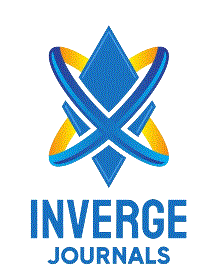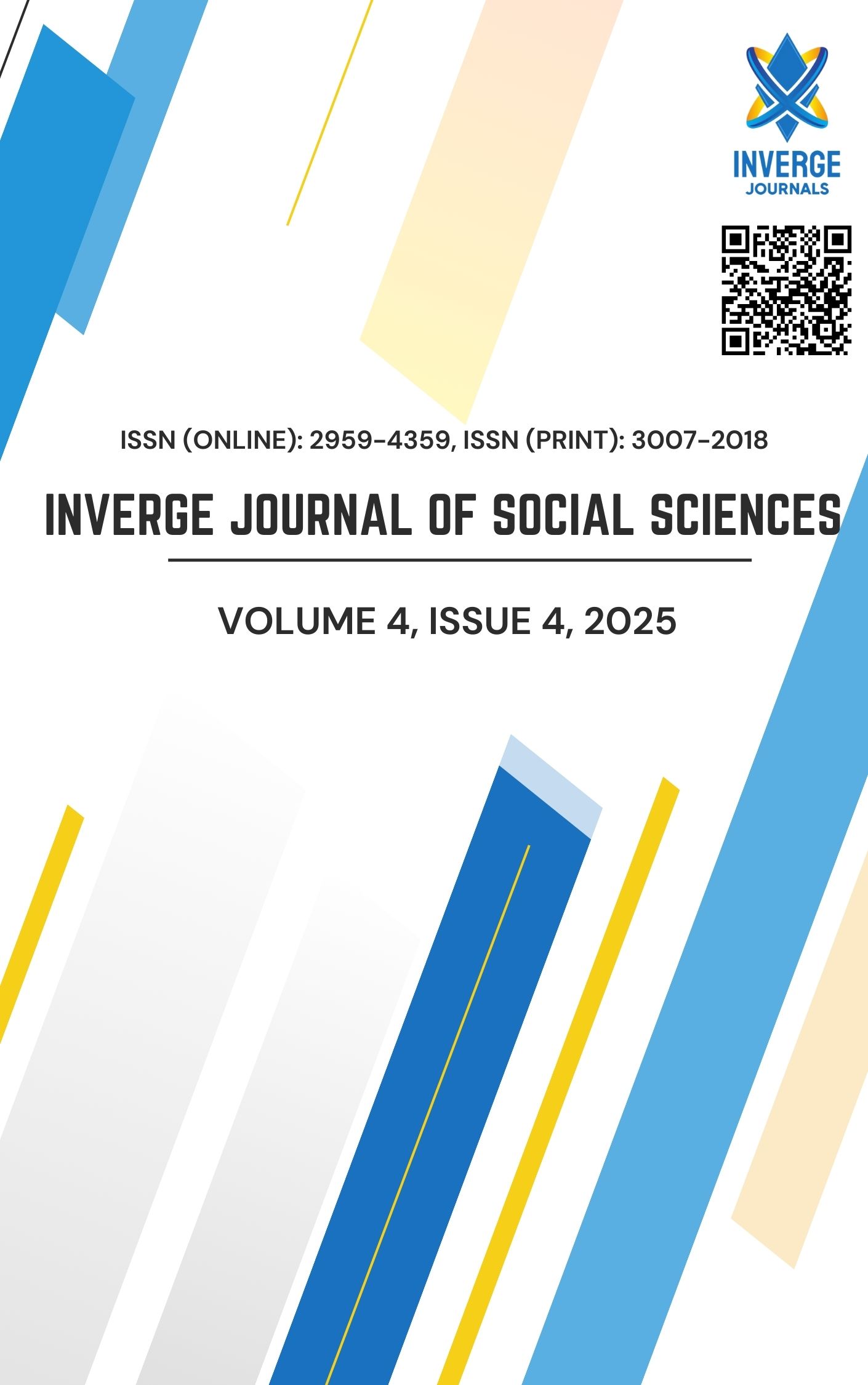Global Currents and Local Narratives: Identity Transformations in Contemporary Pakistani Cinema
DOI:
https://doi.org/10.63544/ijss.v4i4.192Keywords:
Globalization, Pakistani Cinema, Cultural Identity, Media Globalization, Audience Perception, Film IndustryAbstract
This article examines the impact of globalization on Pakistani cinema, focusing on how global exposure is reshaping storytelling, cultural identity, and audience perception. It investigates the dual nature of globalization as both a catalyst for modernization and a potential threat to local authenticity. The study specifically analyses how viewers perceive the interplay between global neoliberal influences and indigenized representations in contemporary Pakistani films.
A quantitative research design was employed, utilizing a structured questionnaire administered to 300 respondents from diverse backgrounds, including students, media professionals, and academics. The instrument contained 25 Likert-scale statements measuring five key dimensions: globalization in cinema, representation of local identity, transformation of cinematic identity, effects of media globalization, and audience satisfaction. Data were analysed using descriptive and inferential statistics to identify trends, correlations, and differences in audience responses. Ethical considerations such as informed consent and confidentiality were strictly maintained.
The results indicate that globalization has contributed to the revival of Pakistani cinema through improved storytelling, production quality, and global recognition. Respondents widely agreed that exposure to international film trends fosters creativity and technical innovation. However, a significant number also expressed concerns about the erosion of traditional values and the prevalence of westernized narratives. This reveals a preference for a hybrid cinematic model that merges global aesthetics with local themes. Audiences emphasized the need to preserve cultural heritage while embracing modernization for sustainable industry growth. The study concludes that globalization presents both an opportunity and a challenge, necessitating a balanced approach that integrates innovation with authenticity to ensure the industry flourishes without losing its cultural identity.
References
Afshar, M. Z., & Shah, M. H. (2025). Examining the role of change management in enhancing organizational resilience in public sector entities. Center for Management Science Research, 3(3), 931–942.
Afshar, M. Z., & Shah, M. H. (2025). Leveraging Porter's diamond model: Public sector insights. The Critical Review of Social Sciences Studies, 3(2), 2255–2271.
Afzal-Khan, F. (2024). Queer performativities in Pakistan: A postcolonial femiqueer reading of a film and two drama serials. Interventions, 26(8), 1166–1188. https://doi.org/10.1080/1369801X.2023.2172547
Ahmad, A. N. (2016). Explorations into Pakistani cinema: Introduction. Screen, 57(4), 468–479. https://doi.org/10.1093/screen/hjw043
Ahmed, S. (2022). Gender roles in contemporary cinema: A cross-national analysis. Global Media and Social Sciences Research Journal, 3(1), 11–19.
Asif, M. (2021). Contingent effect of conflict management towards psychological capital and employees’ engagement in financial sector of Islamabad [Doctoral dissertation, Preston University, Kohat, Islamabad Campus].
Choonara, S. (2017). Cinema and society, film and social change in Pakistan. Pakistan Journal of Historical Studies, 2(1), 47–54.
Datoo, A. K. (2010). Media and youth identity in Pakistan: Global-local dynamics and disjuncture. Journal of Alternative Perspectives in the Social Sciences, 2(1).
Farooqui, J. (2024). Stolen glances, dances, and female empowerment: Evolving representations of romance in Pakistani cinema. Heritage: International Journal of Linguistics and Literature, 1(2), 1–17.
Iqbal, T., Shaheen, F., & Mir, B. A. (2025). Linguistic portrayals of gender, ethnicity, and social class in Pakistani television. Policy Journal of Social Science Review, 3(10), 308–321.
Jan, A., Jamil, T., & Rehman, K. U. (2025). Cultural representation and hybrid identity formation in Punjabi cinema: Exploring the Punjabi diaspora in North America. The Regional Tribune, 4(1), 109–122.
Jin, D. Y. (2012). Transforming the global film industries: Horizontal integration and vertical concentration amid neoliberal globalization. International Communication Gazette, 74(5), 405–422. https://doi.org/10.1177/1748048512445473
Kayal, S., & Saha, R. (2022). Diasporic identities and their representation through cinema: An analysis of diasporic film through South Asian cinemas. Медиаобразование, (1), 88–96.
Khan, M. B., Shams, M., Tamour, F. A., Ahmad, F., & Qadeer, M. (2025). Globalization and cultural transformation: Analyzing identity shifts in Pakistan cinema. The Critical Review of Social Sciences Studies, 3(3), 2434–2445.
Latif, A., Rizvi, S. F. A., & Zaman, H. (2025). Merging tradition and modernity: The cultural significance of Lollywood film posters. ACADEMIA International Journal for Social Sciences, 4(2), 237–256.
Lorenzen, M. (2007). Internationalization vs. globalization of the film industry. Industry and Innovation, 14(4), 349–357. https://doi.org/10.1080/13662710701541619
Malik, A. S., & Akhtar, R. N. (2019). Role of cinema in identity construction in India and Pakistan after Partition 1947. Review of Economics and Development Studies, 5(3), 521–530.
Masood, N., & Bilal, A. (2024). The socio-cultural identities of local films and reception on global platforms. Human Nature Journal of Social Sciences, 5(2), 306–312.
Pathak, D. N. (2017). Melodramatic South Asia: In quest of local cinemas in the region. Journal of Human Values, 23(3), 167–177. https://doi.org/10.1177/0971685817701243
Ramzan, A., & Naseer, M. (2022). Frequency of transnational trends and Pakistani commercial cinema: A study on foreign talent, foreign locations and obscenity in Pakistani movies. Global Digital & Print Media Review, 5(4), 38–53.
Raw, L. (2017). Audiences, literacies and adaptations. Literature/Film Quarterly, 45(4).
Rizwan, R. (2023). Outside the imagined community: Pashtun subjects in contemporary Pakistani cinema. South Asian Popular Culture, 21(1), 25–40. https://doi.org/10.1080/14746689.2022.2154993
Salam, S., & Salam-Salmaoui, R. (2025). Who owns womanhood? ‘Churails,’ mimicry, hybridity, and the reclamation of gender roles in postcolonial Pakistan. Feminist Media Studies, 25(5), 1292–1314. https://doi.org/10.1080/14680777.2025.1012345
Sattar, H. A., Ashraf, A., & Hassan, Z. (2024). Generative artificial intelligence and the media industries: Collective consequences for journalism, advertising, and public relations. Journal of Computational Informatics & Business, 2(2), 70–77.
Sekaran, U., & Bougie, R. (2016). Research methods for business: A skill building approach (7th ed.). John Wiley & Sons.
Shafiq, Z., Sharif, M. M., Malik, W., & Shafiq, F. (2020). ‘Remaking' the genre cinema of South Asia. Pakistan Vision, 21(1), 120.
Shams, M. A., Sattar, H. A., Ahmad, F., Shahid, U., & Bashir, B. (2025). Assessing the digital divide and its implications in Pakistan: The role of media. Journal of Media Horizons, 6(5), 720–744. https://jmhorizons.com/index.php/journal/article/view/847
Siddique, S. (2019). Archive filmaria: Cinema, curation, and contagion. Comparative Studies of South Asia, Africa and the Middle East, 39(1), 196–211. https://doi.org/10.1080/10894160.2018.1553217
Zhabskiy, M. I., & Tarasov, K. A. (2024). Globalization of cinematographic communication. Russian Journal of World Politics and Law of Nations, 2(2), 74–91.
Downloads
Published
How to Cite
Issue
Section
Categories
License
Copyright (c) 2025 Maham Shams, Ramal Naveed, Zaiba Azeem , Fatima Ahmad, Sundas Jabeen Mirza

This work is licensed under a Creative Commons Attribution-NonCommercial-ShareAlike 4.0 International License.
The work is concurrently licensed under a Creative Commons Attribution-NonCommercial-ShareAlike 4.0 International License, which permits others to share the work with an acknowledgement of the authorship and the work's original publication in this journal, while the authors retain copyright and grant the journal the right of first publication.









